Introduction
During our family’s two years of full-time travel, we’ve learned a lot of things via trial and error.
While some of the products and resources that we’ve tried have been duds, others have been total lifesavers.
This is the list I wish I had had when I first started planning our traveling!
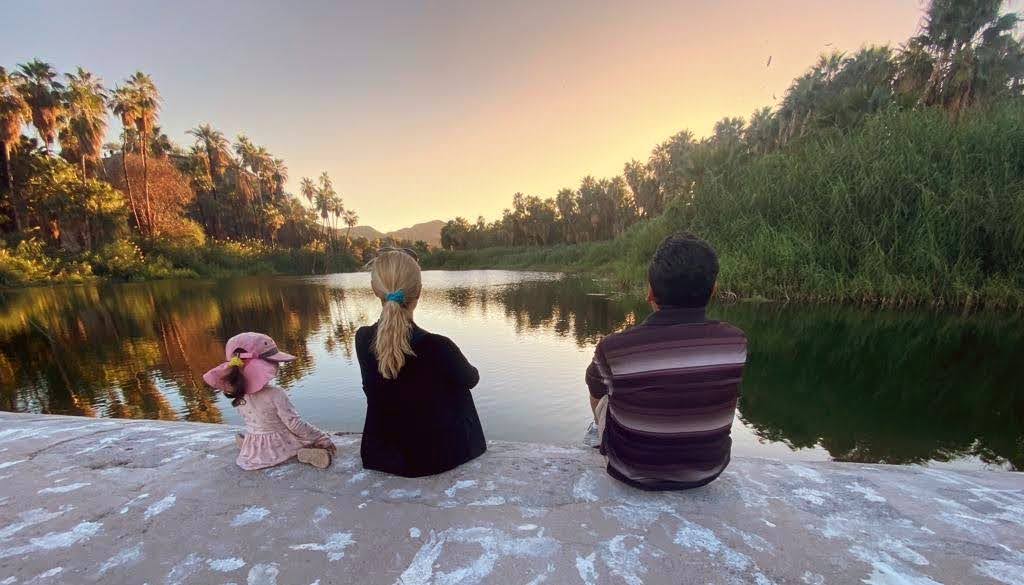
What are the top resources for Digital Nomad families in 2024?
Planning your trip
1. Facebook Groups
For trip planning, I have found getting feedback on itinerary ideas from nomad parents in Facebook groups to be very helpful.
My favorite groups for this are:
Senior Nomads
(not specific to digital nomads with kids, but a very helpful community with lots of nuggets related to trip planning)
2. Booking tours
For booking family-friendly tours, we like Viator and GetYourGuide.
This article gives a helpful comparison of the pros and cons of each platform.
3. Travel Insurance
Although medical care is much more affordable in many countries outside the US, we always buy travel insurance in case of a serious accident.
For our last trip to Mexico, we compared plans on TravelInsurance.com and decided on the Travel Guard Essential policy based on price, coverage, and reviews.
Thankfully, we didn’t have to use it, so I can’t comment on that part of it.
The specific travel insurance you choose will, of course, depend on your family’s needs. Some other favorites among nomad families are:
- World Nomads
- Safety Wing – they offer free kids’ insurance with a parent’s policy
- Genki
- IATI Travel Insurance
- Seven Corners
Some people prefer to get global health insurance rather than travel insurance.
Unlike travel insurance, which is mainly for emergencies, health insurance gives you broader coverage. Some popular choices to consider in that category are:
- Cigna Global
- VUMI currently not available to permanent residents of the United States
- IMG Global
4. Travel Hacking
I wish I had learned about travel hacking sooner. I would have started saving points way before I ever started full-time travel. Hopefully, you can get started right away.
Of course, only consider this strategy if you are able to pay off your cards in full every month. Otherwise, any benefits will be outweighed by the interest you’ll have to pay on what you owe.
And don’t spend more than you usually would to earn points, for the same reason.
In terms of choosing cards, one mistake I made early on is dismissing credit cards that had fees without carefully weighing the costs and benefits of a fee vs. a no-fee card.
Some cards with fees provide benefits which far outweigh the fees.
A good example of a card like this is the Chase Sapphire Preferred, which is the travel hacking card I recommend starting with is.
It has an affordable annual fee, and allows you to earn Chase Ultimate Rewards points (often referred to as UR Points), which many consider the most valuable points in the travel hacking game.
For us, travel hacking works well because we pay for our Airbnbs with credit cards, which helps us to meet the minimum spend for the sign-up bonus.
If you want to learn more, my favorite resources are:
- 10xTravel Facebook group
(you’ll need to take the free course 10x Travel Course to join this group, which is 100% worth doing) - Daily Drop email newsletter
- The Points Guy email newsletter
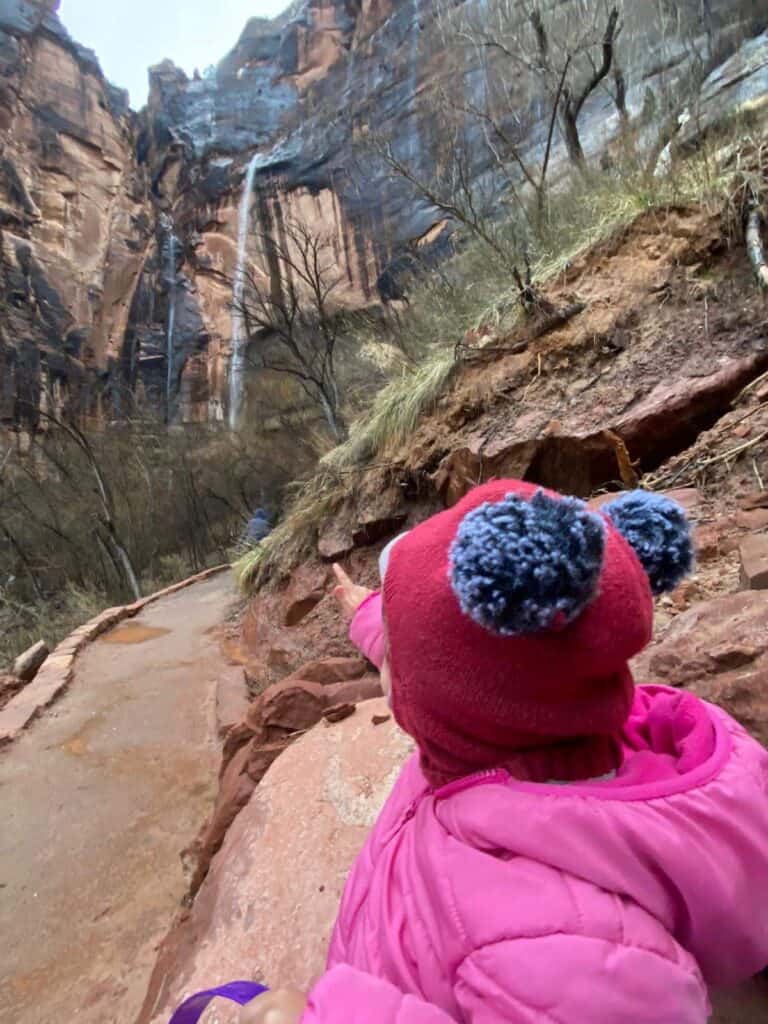
Booking Accommodation and Flights
1. Airbnb
We mainly use Airbnb for our accommodation. I know this is a controversial topic, with some nomadic families hating Airbnbs for the cleaning fees and (sometimes) strict cancellation policies.
For us, the pros outweigh the cons. I like having a kitchen so I can cook healthy meals for my family. That also saves us money as we rarely eat out.
We also appreciate having the separate rooms of a house as opposed to a hotel room so that one parent can work and the other can take care of our daughter.
Having the space for us to spread out and not drive each other crazy is another pro!
And finally, staying for a month is much more economical than a hotel, in the US anyway.
You get huge discounts on the daily or weekly rate, and in some states, if you stay for 30 days, you don’t pay tax.
Also, if you join the British Airways loyalty program (called the Executive Club) book via the British Airways website, you get 2 Avios per dollar spent on Airbnb, for doing nothing but clicking a link!
Avios is the name of the points that British Airways uses, and can also be redeemed on other airlines such as Qatar and Iberia.
2. VRBO
Wanted to include this as worth considering, but I haven’t personally booked anything on VRBO.
Searching on the site in the past, the prices seem to be higher for monthly stays, and there seem to be fewer reviews. This article seemed to agree.
3. Other Options
For shorter stays, we use Booking.com or Hotels.com.
I don’t like them for long-term stays because as of right now, Booking.com doesn’t show all the taxes and fees until you’re about to check out (which can literally double the cost of the stay in some cases), and neither allows you to filter by all the amenities that Airbnb does.
You also don’t usually get the discount for stays longer than 28 days like you do on Airbnb.
4. House Sitting
Some nomad families swear by house sitting. This is not something I’ve personally tried, so I can’t recommend it, but this video gives a great overview of why you might want to consider it as an option. The most popular site for this is trustedhousesitters.com. Despite the name, be aware that it is more pet sitting than house sitting.
5. Booking Flights
Frommers does a regular review of the best airfare search sites. It’s very useful and I check it from time to time to stay up to date on where to get the best deals.
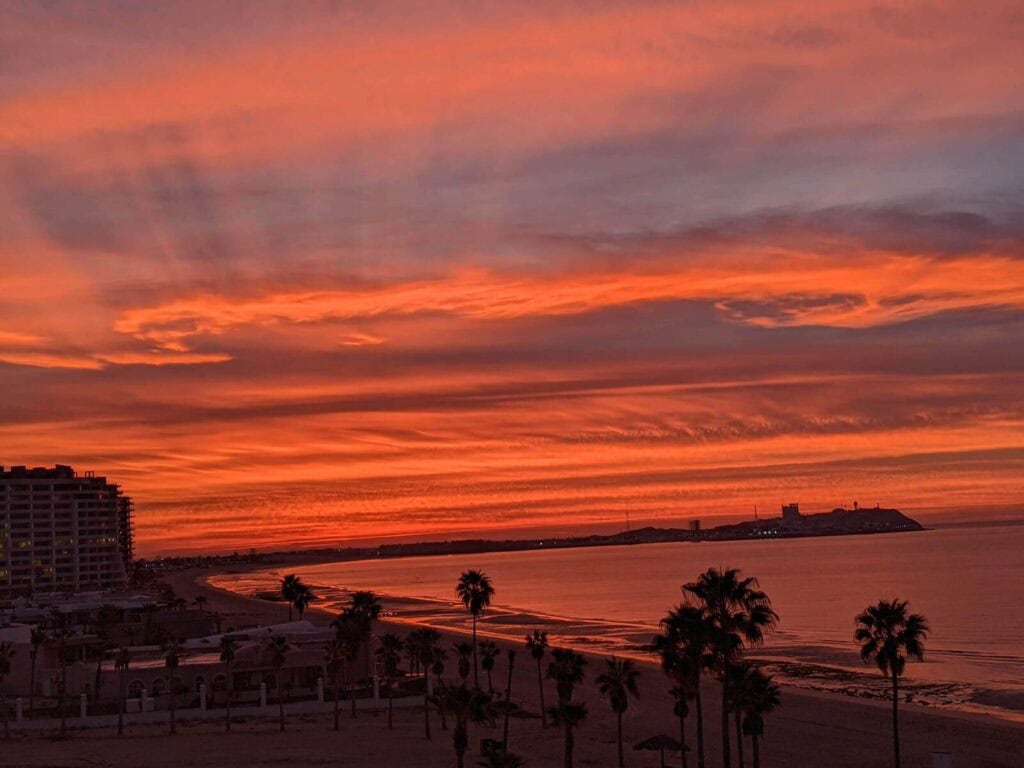
Travel Gear
1. Airbnb Essentials
As I said, we usually stay in Airbnbs. After staying in over 50, we have a small kit of essentials that we bring to supplement what we find. These include:
- Splatmat for protecting Airbnb carpets
- Knife sharpener. Airbnb kitchens tend to not have the sharpest knives, and having a nice sharp knife makes all the difference in food prep!
- Small travel light This is multifunctional – you can use it as a bedside light, or to light up dark spaces while cooking or working.
- Small collapsible strainer – strainers are another item a lot of Airbnb’s tend to not have, and this one takes up almost no space and makes cooking pasta so much easier!
- Knife bag – Clearly I like sharp knives, and sometimes I just want to use my own! This bag is compact and super useful for that. I also keep small handy items like my measuring spoons, kitchen scissors, and my knife sharpener in this bag.
- Hand blender – for making smoothies on the road.
2. Luggage For Air Travel
Rolling backpack
I love how this is both a backpack and rolling hand luggage for the plane.
It has a ton of compartments which helps with organization, and high quality zippers that are super easy to open and close.
Also, the wheels roll smoothly making it a breeze to navigate through airports (it’s the little things that make all the difference in full-time travel!).
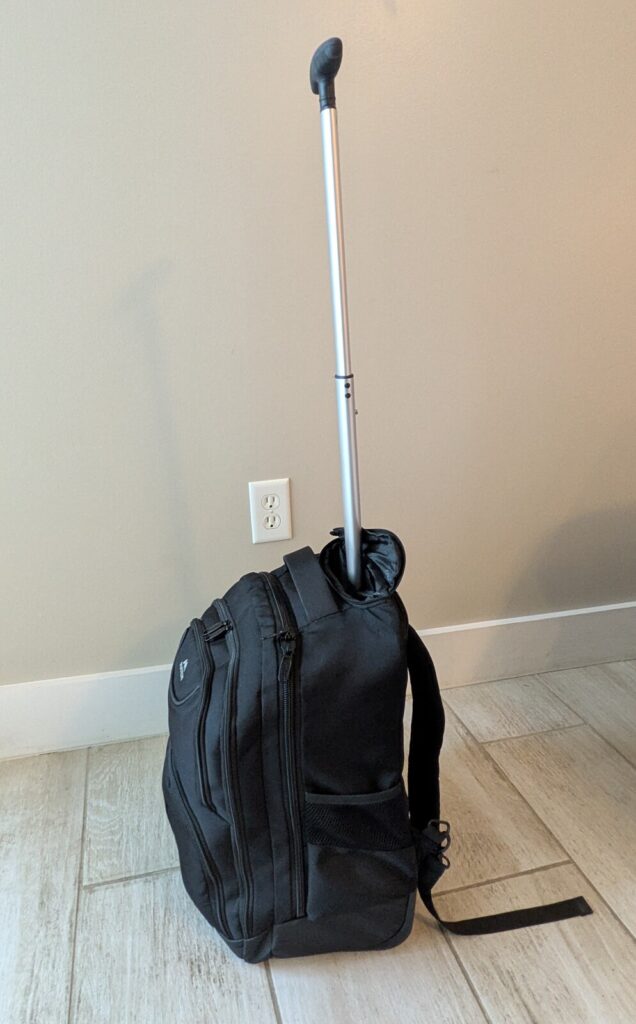
Laptop backpack
This is a light, stylish looking little backpack that I use when I have to travel by myself for work.
It’s great as hand luggage on the plane, and has lasted well after many work trips.
It’s also compact, so when we’re on the road, I can squash it down into another suitcase so it doesn’t take up much room in the van.
3. Luggage For Road Travel
Gig bag
When we are on the road, my husband travels with a two monitor plus laptop set up for his work, and this gig bag has been a lifesaver in keeping his cables organized.
It’s intended for DJs so it has many compartments for keeping electronics and other items in order. It lasted well for the two years we were on the road.
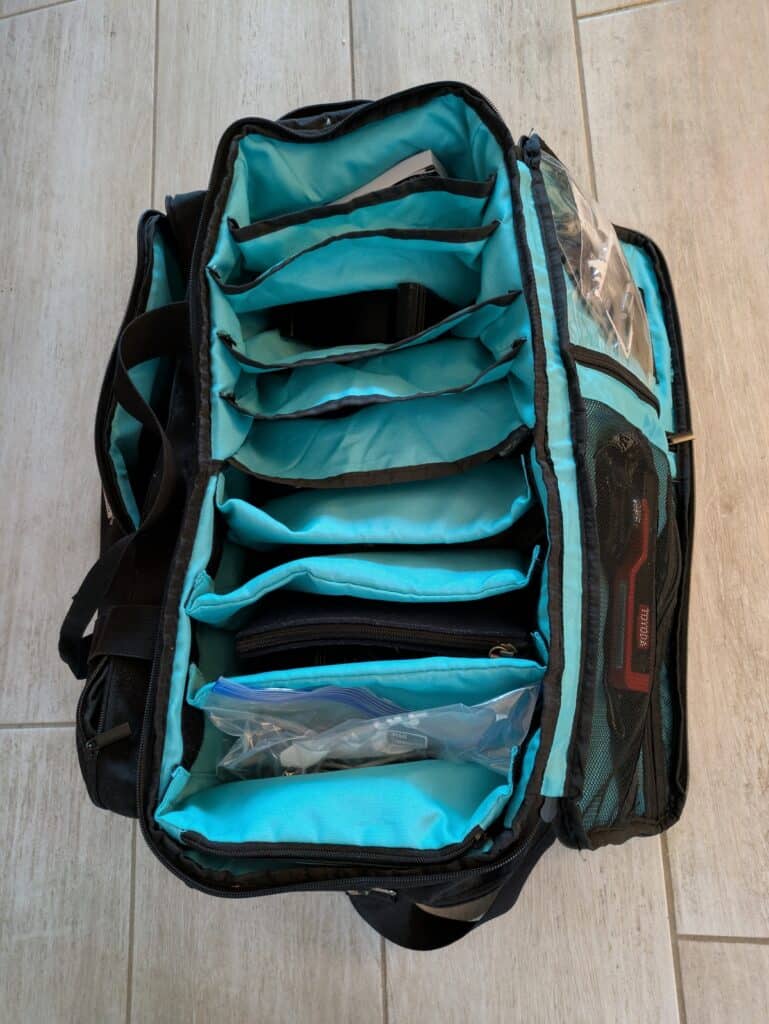
Car battery jump starter
Once, our car battery died in a tiny town in Baja California Sur, Mexico. It was a national holiday and everything was closed.
We were lucky to find a very kind mechanic who was willing to help us, but after that experience, we bought this car battery jump starter to be safe. It has also helped us light a gas stove once or twice.
Travel First Aid Kit for the car
Luckily we haven’t had to use this much, except for the disinfectant pads for some scrapes and falls.
Gives us peace of mind to have it in the car though. It’s small and fits into one of the storage cubby holes in the back.
4. Other Travel Supplies
Lightweight backpack for hiking. I love this little backpack. It is incredibly light, rolls up into its own tiny zippered storage bag when not in use (it’s connected to the backpack, so you won’t lose it), and it a fraction of the price of the Columbia version of these bags, and just as good quality, in my opinion.
Very comfortable to use while hiking, even if I with multiple water bottles and jackets and reward-lollipops to motivate our toddler to complete the hike.
Toddler sleeping tent
When we first started full-time travel, I was worried that our toddler would not be happy sleeping in a strange bed every night.
I wanted her to have her own little portable safe space that we could recreate wherever we went.
This little tent, which I think is intended for the beach, was wonderful for that. She loved it for two years until she outgrew it and was ready to sleep in a big bed.
She still likes to use it in her play space as part of various games. It is great to take on the road or the plane, as it folds up into a compact bag, and is pretty light.
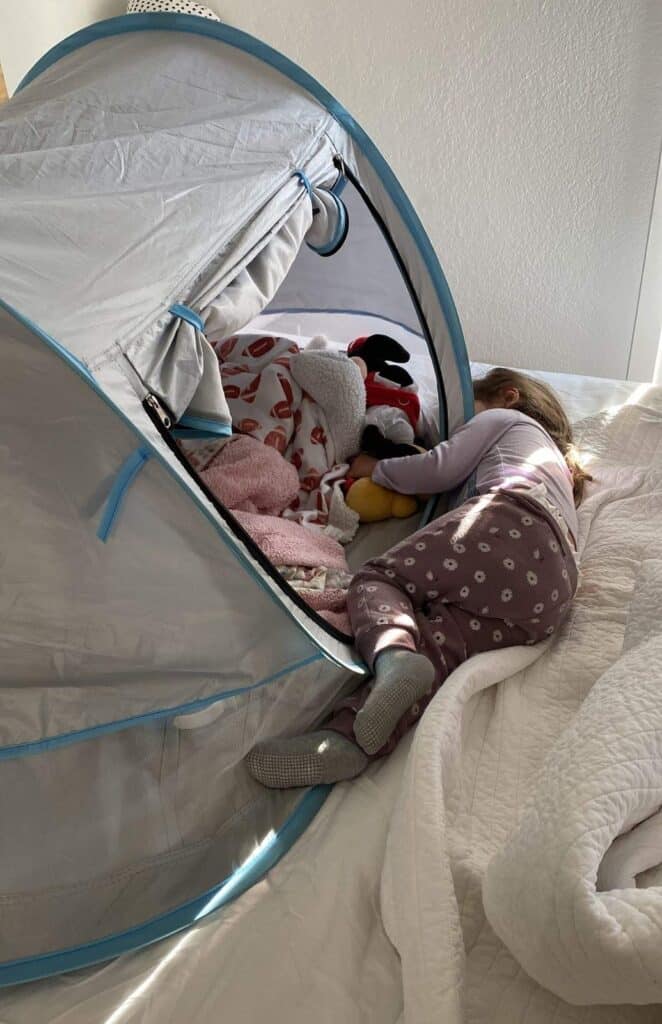
Packing cubes
These help to keep our clothes organized while traveling. I like the mesh which allows you to see what’s inside without opening it.
I like these because when we transition from road travel to air travel I just move some of the cubes rather than totally unpacking and repacking everything.
We’ve used them for over two years and they haven’t ripped at all, and the zippers are still in good shape.
Vacuum Storage Bags
These make transporting our bulky winter gear much easier.
Thick Eye Mask
These are so much better than the regular eye masks you get on the plane. Kind of like blackout curtains for your eyes.
I use them every night and on planes, cars, anywhere I want to sleep.
They do get kind of dirty, but I have washed them in the washing machine and they have come out fine.
Noise Canceling Headphones
These are the best things I’ve bought in the last 5 years, hands down. I first bought them before we started traveling, when I was pregnant, and became super sensitive to noise.
By playing low frequency noise through them (eg. Brown noise through a white noise app), most things are completely blocked out, especially lower frequencies (like banging, footsteps from upstairs).
You can still hear higher frequencies (I wish I could say they blocked out the tantrums from the terrible twos and threes. But they’re not magic).
They’re still wonderful though. I sleep with them every night.
Travel Water Flosser
My dentist told me to use a water flosser, and the usual WaterPik was not going to fit in my luggage.
This one for travel works great, even though I usually have to fill the chamber twice to get through flossing all my teeth. No big deal.
Travel Electronics Organizer
For smaller electronics like chargers, external hard drives, flash drives, this is a good little organizer.
It has enough sections to organize everything without being too big or bulky.
Folding Piano Keyboard
This is one I only take when we’re driving, but it has been so great to have music in my life again.
It also gives me the chance to play with my daughter and nurture a love of music in her. It’s no Steinway, but it gets the job done, comes with a sustain pedal, and headphones if you want to practice without bothering others.
It also has stickers to name the keys, so if you’re learning or want to teach someone, it’s really great.
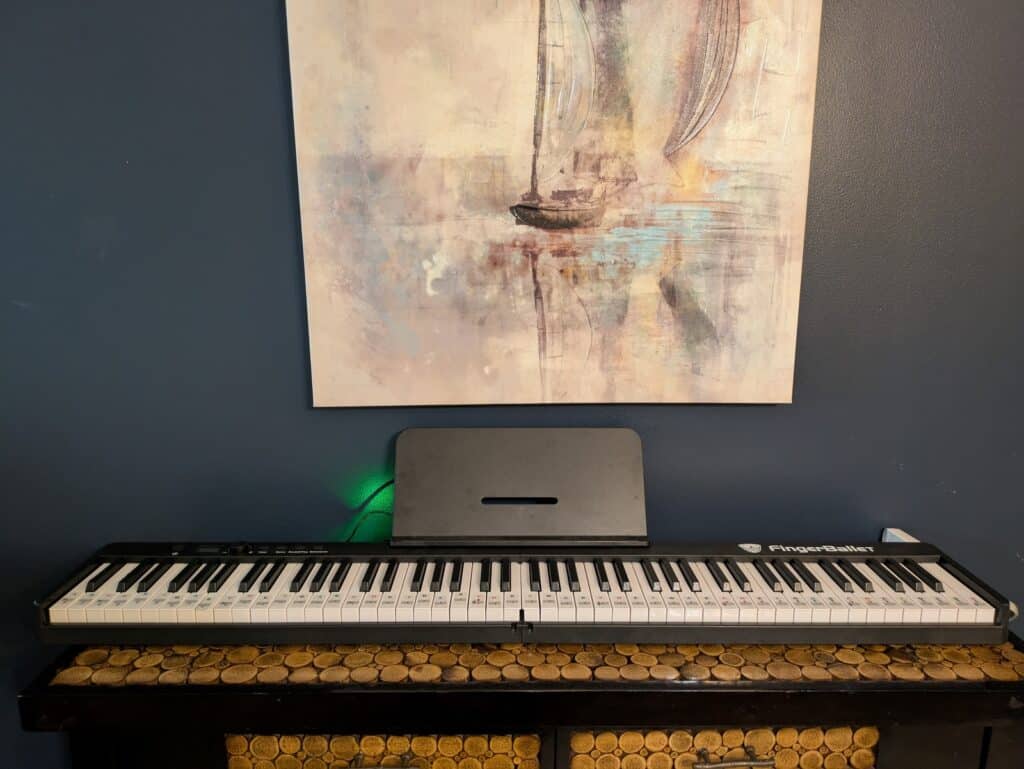
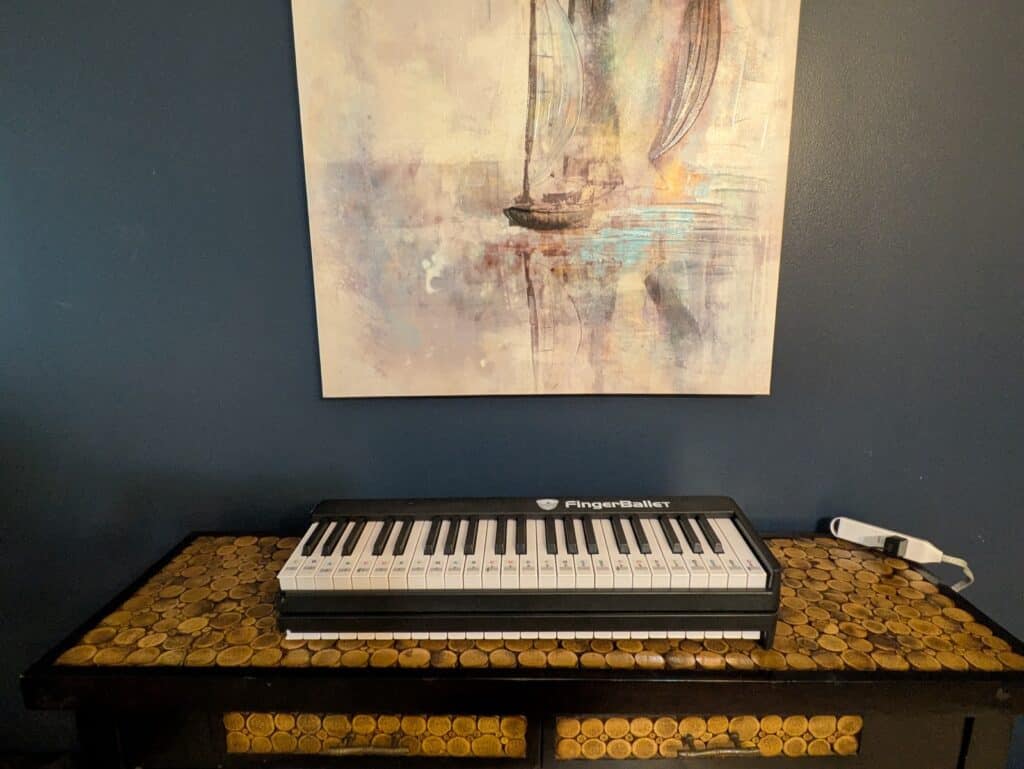
Storage containers for eating in hotels. I prefer to make our own meals rather than eating out a lot. This can be challenging in hotels.
I bought these simple storage containers as they allow me to store and reheat food I’ve made previously.
They also double as bowls for oatmeal, soup and edamame (all healthy snacks that you can whip up in the microwave and that we eat a lot in hotels!).
Ecos plastic free laundry detergent strips These laundry strips take up so much less space than a bulky laundry detergent bottle, and come in handy when you need to do laundry on the road.
They’re sheets that you just add to the washing machine before the clothes, and they react with the water and create detergent. Such a clever idea!
5. Kid’s Travel Gear
Kid’s tablet. This tablet had mixed reviews on Amazon, but it has worked well for us. I like the hard case to withstand being flung across the living room when tantrums strike. It gives us some peace on long drives and long flights.
Kid’s headphones. I think these headphones are super cute, with the little strawberry design.
They are also great for when the parents get sick of listening to Blippi or Nastya, and to spare the other passengers on the plane.
For connecting to tablets or devices that don’t have a headphone jack, a jack to USB connector works great.”
Kid’s suction bowls. These suction bowls are great even if you’re not traveling. But anything that can help me avoid having to clean food off the hotel or Airbnb carpet is a win in my book.
These stick on the table and resist all her attempts to fling them across the room.
Kid’s toilet stairs. These toilet stairs were the secret to potty-training on the road. She loved that they allowed her to climb on the toilet by herself. And they fold up nicely to fit in the van.
We even put them in our checked suitcase on our first plane ride with her because we didn’t want to jinx potty training.
Toddler sun hat. During our travels, we’ve spent a lot of time hiking in the sun and on the beach. This hat has been great in protecting our daughter’s skin.
It has an adjustable band around the head so you can adjust it as your child grows.
It’s washable, and it has a flap to protect the skin on the back of the neck. And it’s super cute – she’s always getting compliments on it.
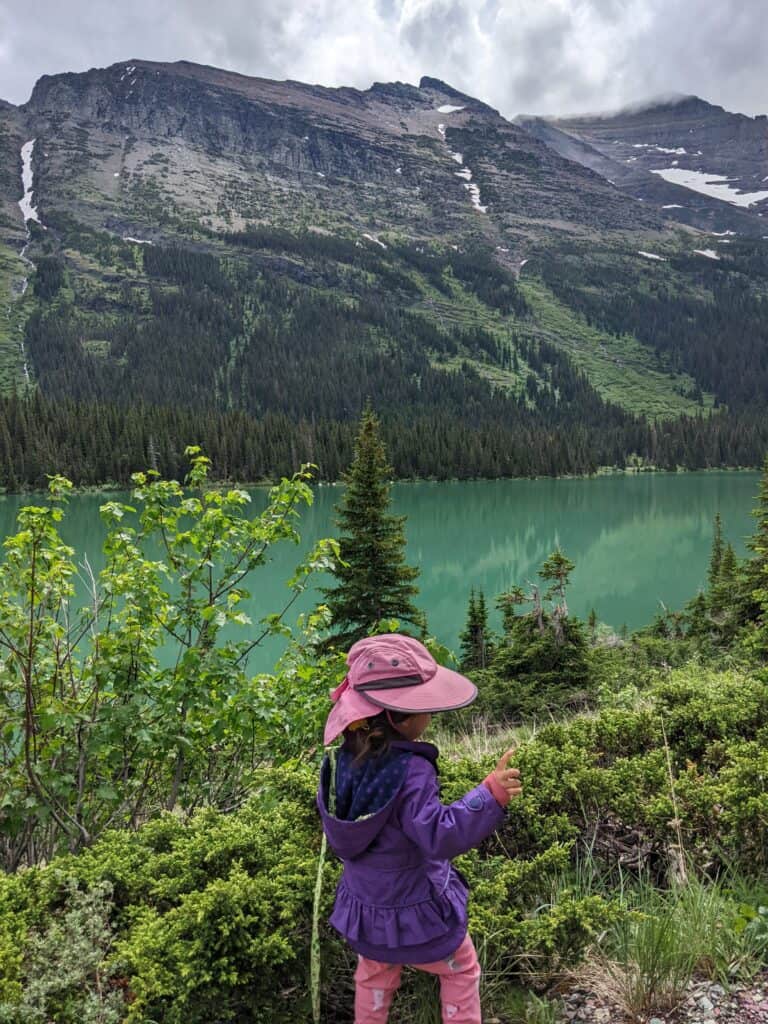
Baby-proofing outlet covers. When our daughter was younger, first thing I would do when we arrived at a new Airbnb or hotel was whip these outlet covers out and pop them into all outlets within her reach.
She didn’t turn out to be interested in outlets, but it gave us peace of mind during the crawling years.
Travel chair. This was very useful little chair for giving our daughter her own dedicated space to eat, color or draw, no matter where we were.
The tray is wipeable so we would use it as a drawing board with wipeable markers.
It also attaches securely to chairs so it was a nice way for her to join us at the family dinner table (when we were in an Airbnb that had one of those!)
Busy book. We bought this busy book to occupy our daughter on her first plane trip, and it did the trick.
She especially liked the Velcro stick-on letters and playing with the various fasteners (zippers, buckles etc).
I will say the glue on the Velcro stickers did not last very well, so you may have to use your own glue to get them to stay on.
Magnetic travel puzzle. This was another purchase for our daughter’s first plane ride.
It’s nice because the puzzle pieces are magnetic so they stick to the board and don’t fall and get lost between the seats.
There are two puzzles included in the tray. She enjoyed it a lot and still plays with it a year later.
Ride Safe travel vest. Some families fly with a car seat to use when driving at their destination. This travel vest is an alternative if you don’t want to do that.
It attaches to the car’s seat belt to provide small bodies with extra protection. However, it does not provide the protection from side impact that a carseat offers.
We ended up using this in Ubers and rental cars in Mexico, and it worked very well for us. However, check the local laws – in some places, car seats are required for children up to a certain age.
Kids Fly Safe for airplane travel. This is a harness that attaches to the seatbelt of the airplane seat, providing greater protection than the airplane seatbelt alone. It’s for for kids 1 year and older, between 22 and 44 pounds.
The reviews on Amazon were mixed, but it worked well for us. Note that only one brand is FAA certified – double check before purchasing.
I bought it directly from the company, and their customer service was slow and not great, but I was a fan of the product once it actually arrived.
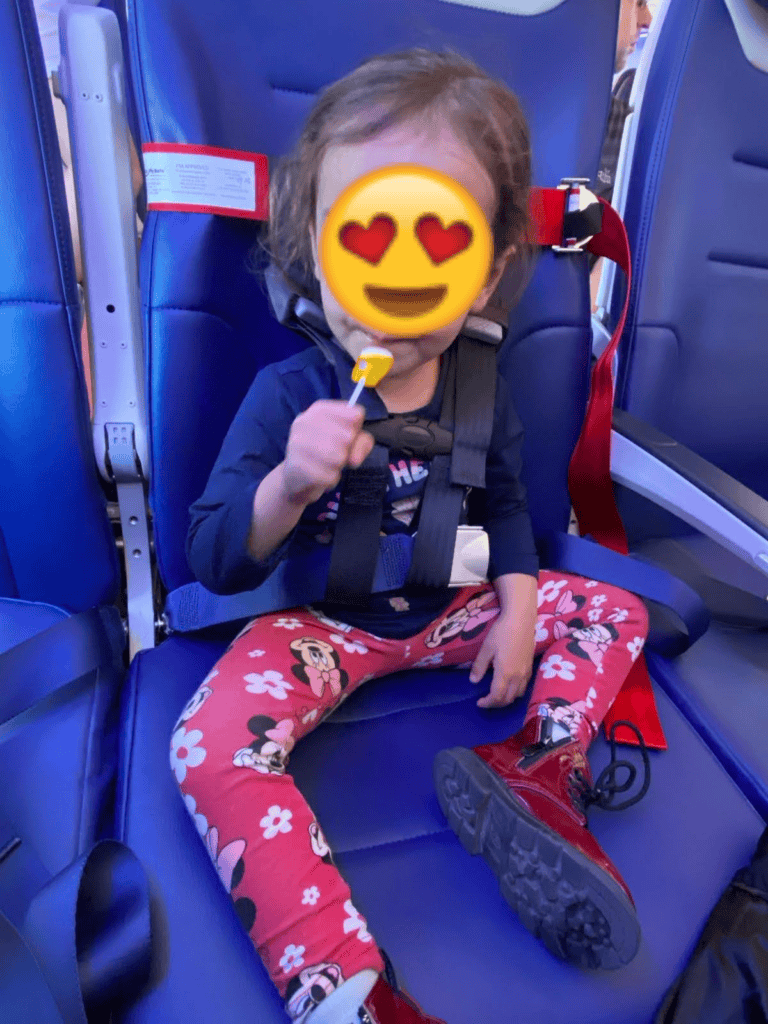
Family Resources for Full-Time Travel
1. Education Resources
Right now our daughter is in her preschool years, but I’ve already done a lot of research on the options available to us when she reaches school-going age. These are the top resources I’ve found so far.
World Schooling
World schooling involves turning world travel into an educational curriculum.
There are many approaches to this – some families travel alone and construct their own curriculum. Others travel in groups with a teacher.
And others attend ‘hubs’ all over the world, where families come together for a period of time for community and educational activities. The most famous of these hubs is Boundless Life.
In addition to these fixed hubs, there are also pop op hubs that bring families together for a shorter time frame at World School Pop Up Hub.
In learning about world schooling, I’ve found these Facebook groups to be very helpful:
If you’re interested in learning more, here are some other resources:
Books:
- “The New Global Student” by Maya Frost
- “Worldschooling: How to Revolutionize Your Child’s Education Through Travel” by Eli Gerzon
- “The Road Taken: How to Dream, Plan, and Live Your Family Adventure Abroad” by Michelle Damiani
Websites and Blogs:
Podcasts:
YouTube Channels:
Conferences and Events:
Online Courses:
- Worldschooling Academy offers various courses related to worldschooling and alternative education
- Trailblazing families offers courses in world schooling as well as various free word schooling resources
Instagram Accounts:
2. Childcare on the road
As much as I love all opportunities we get as digital nomads to do things as a family, sometimes I just want to hang out with my husband.
We’ve had a lot of trial and error with finding childcare on the road, although it has become easier as our daughter has gotten older.
The two things that have worked the best for us has been to ask our Airbnb host for babysitter recommendations, and post in local moms’/parents’ Facebook groups for childcare recommendations.
Local parents’ Facebook groups are just generally a great source of local information for family-friendly activities and events.
3. Sense of Community for Kids
One discovery that was game changer for our family was the US public library system as a great opportunity for our daughter to socialize with other kids.
We had read many suggestions about going to local playgrounds, but our daughter was too shy and not confident enough physically to take part in boisterous games with other kids.
Events at the library such as story time and craft time were a different way for her to learn how to interact with other kids that worked much better for her.
Another reason we love it is that every library has a different selection of toys and games.
We never feel like we’re depriving our daughter of the wide selection of toys that kids with permanent homes and fully stocked toy rooms may have access to, because every library offers her something new.
And we don’t have to make space for it in our van!
Any time we arrive in a new city, first thing we do is to search for the local libraries and check out the events calendar.
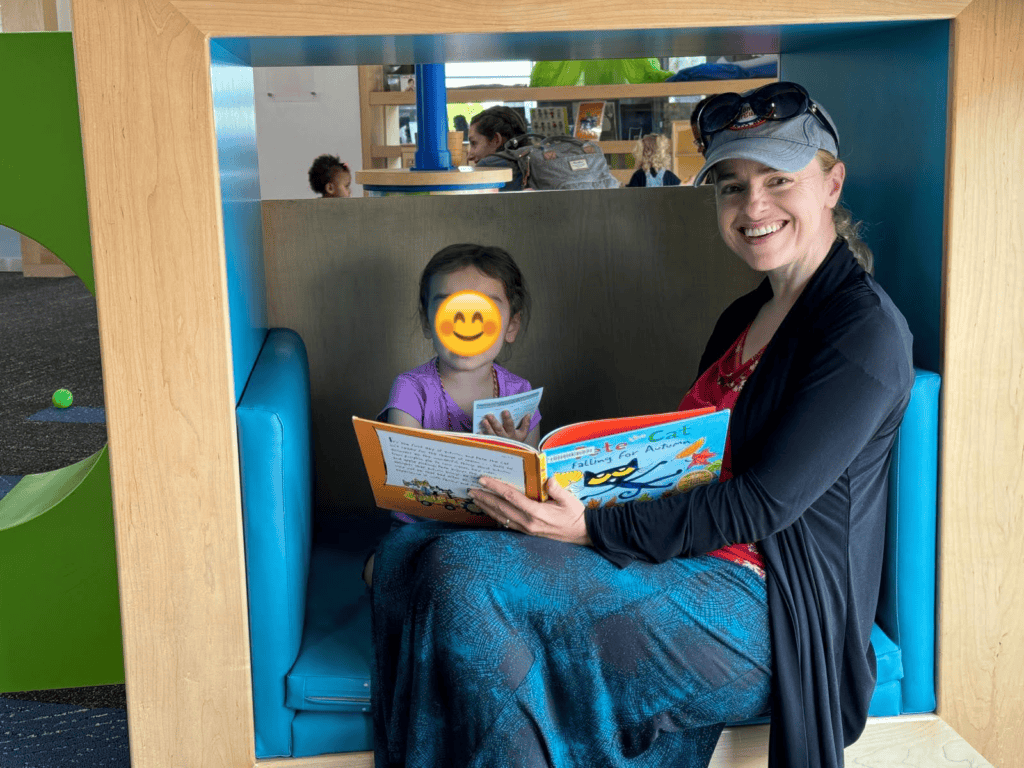
Other Helpful Travel Resources
1. Resources for US-Based Road Travel
Before becoming a full-time digital nomad family, we lived in Illinois. If your car registered there, you need to do a yearly emissions test to renew your vehicle stickers.
However, we found out that South Dakota allows you to register your car even if you don’t live in the state, and they do not require any emissions testing.
You can do it all over the phone – the staff there deal with many out of state car owners and were super helpful.
This video gives a great explanation of the benefits of doing this as well as the process.
2. Resources for Mexico-Based Road Travel
When we spent 6 months driving around Mexico, we found the Facebook group On the Road in Mexico to be a really useful source of tips for current road conditions, safety, as well as route ideas.
There were also many recommendations for accommodation, especially for pet-friendly spots.
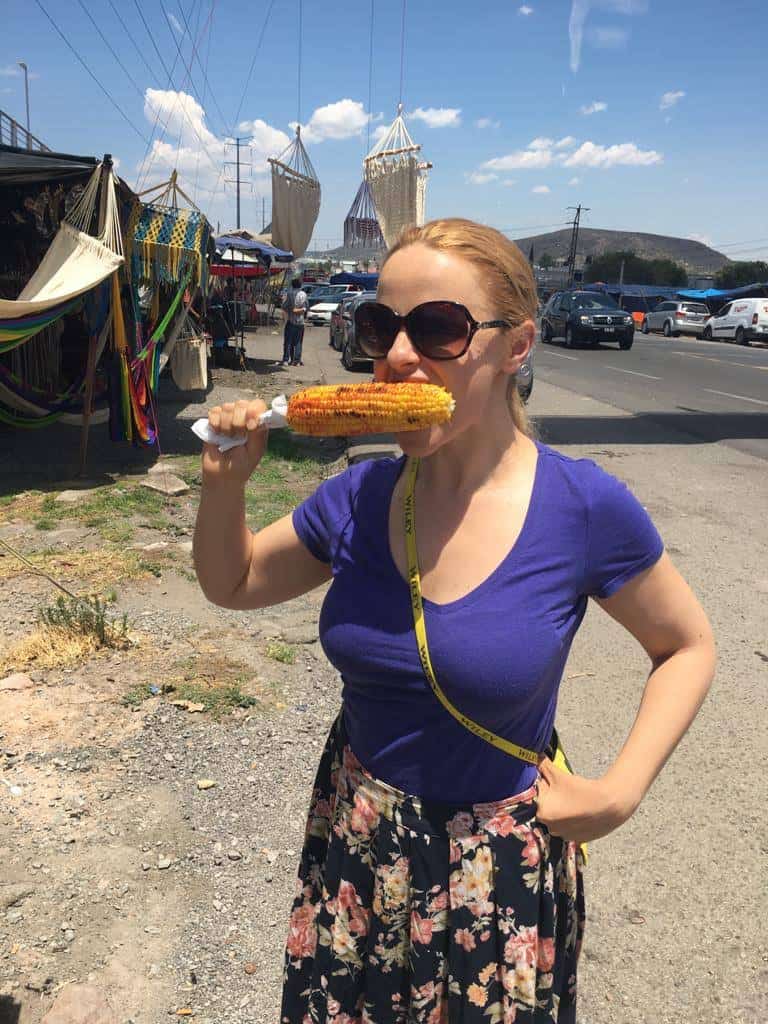
3. Travel Apps
All trails
We use this app a lot when hiking. It shows trail maps, provides various details such as length and elevation gain, and includes helpful reviews from hikers.
I’ve found the maps to be more accurate than Google maps when it comes to trails.
We used the free version for a long time, and now use the paid version because it allows you to download the maps to use offline when there is no signal (often the case in US National Parks for example).
My only criticism of this is that it drains my battery super quickly, because I have an older phone.
I’d suggest testing it out on a shorter hike before relying on it for a lengthier trek.
Audible
On those long drives or plane trips when you’re not connected to the internet, audiobooks are a great way to pass the time. I use Audible for that.
Money Manager and Expenses (only available on Android at time of writing)
When we were planning for full time travel, an important question was, could we afford to do this?
The first step was to track what we were spending our money on, down to the last cent.
I used this free app to do that, and still do to make sure we’re staying on track. It has ads, but they’re not super intrusive or annoying.
NPS app
The National Park Service has a decent free app that has information on each park including activities, hikes and downloadable maps.
There are also free audio tours for some of the parks that you can download in this app that have been informative and enhanced our park experience.
4. Phone plans
If you’re going to travel internationally as a digital nomad family, you’ll need to think about what phone plan fits your family’s needs best.
There are three things to consider:
1. Mobile data, so you can use Google Maps or communicate with your Airbnb hosts on the app when you’re not connected to Wifi
2. Receiving text messages for authentication, for example, from your bank.
3. Calling family and friends at home. Many people prefer to use something like Whatsapp or Facetime for this, rather than a phone plan.
For mobile data, an international e-sim is a great option, if your phone is compatible with eSIMS.
This means you don’t have to buy a new sim card every time you land in a new country.
A popular option is Airalo, which offers local, regional and global eSIM plans, and allows you to top up from the app.
If you want to learn more, this video reviews Airalo and other international esim options.
5. Finances
A really useful hack for saving money when traveling internationally is to open a Charles Schwab Bank Investor Checking Account and use the Schwab debit card when drawing money from ATMs.
This account reimburses all your ATM fees at the end of the month with your monthly statement.
Note that you’ll need a brokerage account with Schwab to be eligible for this checking account.
I have an investor account with them as well and I love it – intuitive app, no fees for stocks bought and sold online (this has been my experience, but of course, always do your own research on the latest commission and fees before signing up for any account!).
Conclusion
All these resources have helped us a ton on our journey. I hope they help you and inspire your own family travel dreams! If you want more inspiration, read more about how to become a digital nomad with kids next, which digs into some questions about setting the right mindset and logistical tips!



